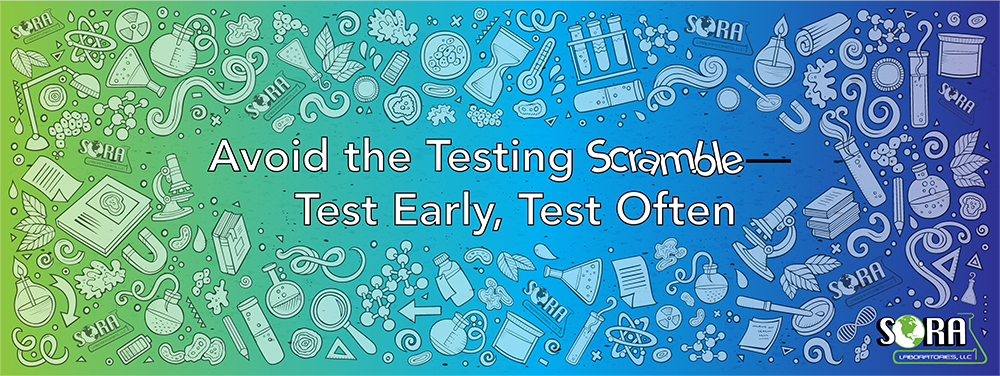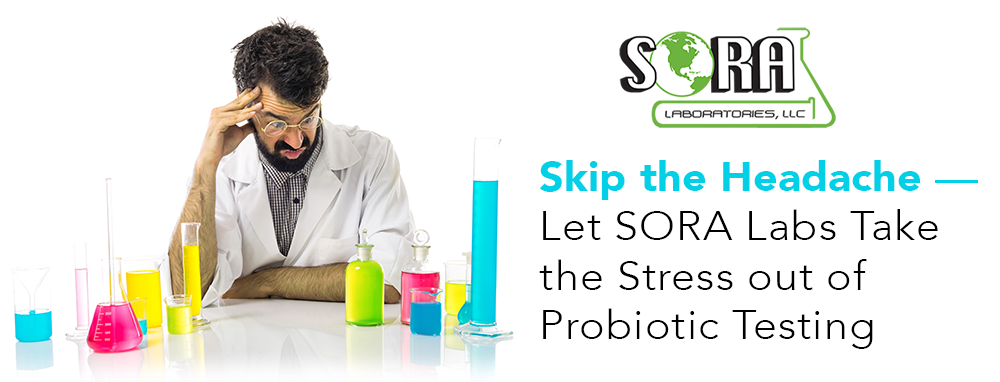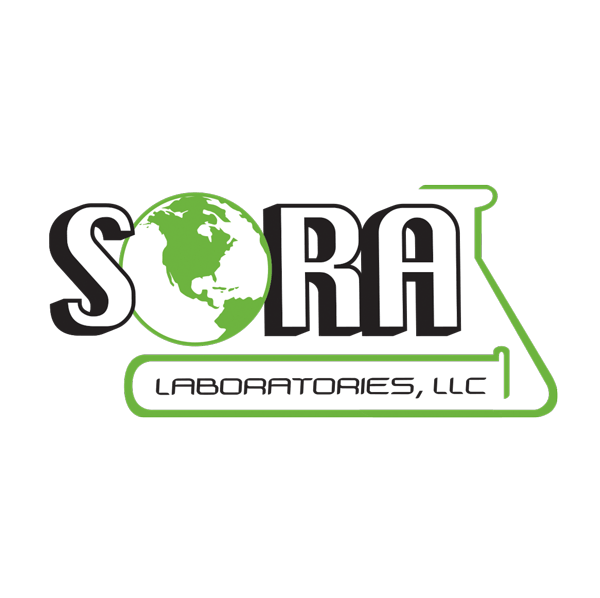[vc_row][vc_column][vc_column_text css=”.vc_custom_1542053472949{margin-bottom: 0px !important;}”]It is a common myth is that one testing lab can handle every kind of test—the reality is that each lab usually specializes in a unique set of test methods. While it may be frustrating to need multiple labs for one finished product, the truth is that not every lab can be focused on every possible test that one product may require. With this in mind, it’s important for customers to focus on how to get the most accurate quality test results for their specific products.
Even in-house labs usually won’t have the capability to be able to test every part of their manufacturer’s product lineup. Sometimes, it just boils down to expense of the equipment or the unique skill that is required to perform certain tests. It may not be feasible or cost effective to add these capabilities to the in-house lab. This is why a specialty contract lab can be a great choice to help fill in the testing gaps!
Contract labs, like SORA Labs, will market the testing for the expertise they have. This provides the volume of samples needed to keep the analysts skill level and method proficiency to the highest level. These specialty methods are technique-based and require stringent pH and temperature controls. Enzyme assays require the enzyme product to act on a specific substrate, causing a by-product reaction that can be measured. The USP/FCC often includes the substrate catalog or part number in the method but this is not always the case. Sometimes the reagents listed in the method are no longer available and suitable alternatives must be found. This can take some time, as finding an alternative substrate can be challenging because testing multiple choices is necessary to qualify a replacement. Comparing results of check standards and getting repeatable results over several days is the key to qualifying a new substrate.
Most contract labs and even in-house labs will not have the data on known samples or the time to get these qualifications completed–SORA Labs can help. Our focus and work with enzyme and probiotic matrixes, day-after-day provide the expertise needed to test your specialty products. Labs usually realize pretty quickly that running these methods sporadically, with a sample or two a week, will not maintain the skill level that these methods require.
When your focus is quality (as it should be), make sure to choose the correct lab for accurate and repeatable results. When it comes to enzyme and probiotic products, the choice is clear—SORA Labs![/vc_column_text][/vc_column][/vc_row]
Tricky Ingredients—Here’s How to Avoid Impossible Challenges
There is nothing simple about the process of developing methods for an analytical lab. Using compendial methods from reliable sources like USP, AOAC, FDA, BP, JP, etc. for third-party verification and quality control testing is always your best option. In some cases, however, the ingredient that needs verification does not have a compendial method available. In fact, manufacturers may produce an ingredient and develop a test method specifically for that product. In these situations, a contract lab like SORA Labs, will need to work directly with the supplier to transfer the method to the lab.
Method transfer and development takes time to get up and running, so planning ahead of your product launch is critical. After receiving the method from the ingredient supplier, the lab will attempt the assay. There is usually further discussion and proficiency testing after this first attempt to get accurate and repeatable results. Often, the method that is transferred will only be applicable to the raw material, and it can be challenging to adapt the method to a finished product matrix.
Ingredients like probiotics with CFU/g counts, white kidney bean extract with alpha-amylase inhibition testing and even special gluten-digesting enzymes are examples of ingredients that can be difficult to test once included in a blended matrix. While this testing can be tricky, it’s not impossible for a competent lab. Since test methods for these types of ingredients are designed for the raw materials and simple finished products, there may be additional method development when assaying the ingredients in a complex blend. In some rare instances, the resources and time it takes for method development may be cost-prohibitive to develop the product, so testing during research and development can prevent impossible challenges down the road. A rule of thumb—the simpler the blend, the more straight-forward the testing will be. Understanding the possible challenges up-front will give you a better understanding of the formulation process and what it might take to create your product.
When enzymes and probiotics are in your formulation, SORA Labs wants to be your specialty testing lab of choice. Call us today for a quote!
Avoid the Testing Scramble—Test Early, Test Often
The demand for finished product testing has been steadily increasing for the past year. With FDA findings on the rise, marketers and manufacturers are trying to better understand the specific interactions with all the combined ingredients in the final product. Unfortunately, when testing is performed on the finished product only, there may be a scramble to understand the interactions between the active ingredients and choose what markers can be recovered to meet label claims.
The proper way to handle full label claim testing is to perform the appropriate tests during the research and development stage. During this stage, the ingredient interactions can be conclusively determined, so over-formulation or other formulation changes can be made if necessary. With this data in-hand, the specifications can be set, label claims can be calculated and testing guidelines can be created. When this protocol is followed, the final quality control testing on the finished product becomes the efficacy verification step that it is intended to be.
This type of testing protocol is especially important in probiotic and enzyme formulations, as there are many common interferences that have been seen time and again. The good news is, these can be proven with a quick spike recovery test or small batch lab blend to verify any ingredients that may be causing interference. A knowledgeable and experienced lab will know exactly how to get you the information you need to ensure a successful product—we are here to help! Testing will help you fully understand your products, and if you see an unusual result or don’t understand why the result is much higher or lower than specification, then we can help explain it. We’re here to help you solve the mystery! Just remember, testing your finished product blends is challenging but not impossible with the right partner.
Brand Owners or Manufacturers—Who’s on the Hook for Compliance?
[vc_row][vc_column][vc_column_text css=”.vc_custom_1534182068266{margin-bottom: 0px !important;}”]There are many ways to demonstrate compliance with the Code of Federal Regulations, Prop 65 and other regulatory requirements. However, heavy metal testing is one of the most important and can identify elements that could adulterate the finished product. This testing helps ensure that ingredients used in manufacturing will not contribute to harmful levels of arsenic, cadmium, mercury, lead or other elements. And, it’s not just manufacturers that are on the hook for heavy metal compliance. Even brand owners are responsible for the quality of their finished product and preventing adulteration. A recent FDA Warning letter highlights the full scope of compliance responsibility:
FDA warning letter to a health food store dated March 9, 2018
- Although a firm may contract out certain dietary supplement manufacturing, packaging, and labeling operations, it cannot contract out its ultimate responsibility to ensure that the dietary supplement it places into commerce (or causes to be placed into commerce) is not adulterated for failure to comply with dietary supplement CGMP requirements.
Heavy metals are tested by measuring in low, parts per million levels using sensitive equipment to detect the trace amounts of harmful elements. Ion Coupled Plasma with Mass Spectrometry (ICP-MS) is used most often for this testing. This type of contamination can often be found when plants are grown in soil that contains high levels of these metals. The plants are fed by the soil and may absorb the unwanted elements. Therefore, all botanical ingredients should be screened to ensure they are free from heavy metal contaminates.
Ingredients that are processed in countries or areas where water quality is a concern will also need to be tested, as tainted water may also lead to heavy metal contamination. Qualifying each ingredient supplier and testing raw materials is a key component for avoiding adulteration of the finished product. Although heavy metals are not the only source of adulteration in ingredients, they should be addressed, with specifications set for high-quality finished product. Let SORA Labs help with your heavy metal testing. Request a quote today![/vc_column_text][/vc_column][/vc_row]
Tips and Tricks from your Partner in Quality
As your partner in quality, we have the fifty-thousand foot view privilege. SORA Labs is known for problem solving and working closely with customers to analyze complex formulations, thousands of test come through our doors. Let’s talk about the most complex ingredient/nutrient formulations that bring analytical challenges with them.
*Enzymes and probiotics are sensitive to heat and humidity. They also come with special handling instructions, and as the weather gets warmer, it’s a good idea to ship samples overnight or in a cooler with ice packs. The goal for testing is to have results that are representative of the material being stored at your facility. If these sensitive materials get too hot they could degrade in shipping, then the test results would not accurately represent your material.
*If it’s not recommended, leave the spec off…it’s OKAY, honestly! When setting required specifications for probiotic products, review monographs from the United States Pharmacopeia (USP)/Food Chemical Codex (FCC) or other compendia for guidance. You will notice, the probiotic monographs don’t recommend total plate count (TPC)/aerobic plate count (APC) specifications. Instead of listing APC/TPC, labeling recommendations established by International Probiotic Association (IAP) and Council for Responsible Nutrition (CRN) in a development of scientifically-based “Best Practices Guidelines for Probiotics” recommends labeling guideline specifications to colony forming units (CFU)/gram, which have been included in the FCC.
*Both probiotics and enzymes can have interferences from co-ingredients in the blend. Another popular sample submission is the food/gummy matrix, which can also create testing challenges. We can help! See our “Challenge Accepted” blog for insights on common interferences.
*Avoiding FDA Warning Letters and 483’s for lack of finished product testing is the brand owner’s/manufacturer’s responsibility. Supplement products are complex and testing interferences in the finished product are common. These interferences may make it impossible to meet the label claim on the bottle for every ingredient, but testing can prove these interferences. Documentation is the key to a successful FDA inspection.
Just remember, the goal is to procure testing from experienced lab partners that can provide accurate CofA data. SORA Labs wants to be that partner, providing a seamless extension to your quality control department!
The Ins and Outs Allergen Testing—Let us Help you Navigate this Complex Landscape
Lab testing to verify identity, potency and strength of supplement ingredients/blends is a normal part of the quality control process. Because of this, a manufacturer’s quality control department should be well-versed in many regulations that need to be followed to manufacture a quality product. One of these regulations is allergen labeling. The Food Allergen Labeling and Consumer Protection Act (FALCPA) requires that the label of a food that contains an ingredient that is or contains protein from a “major food allergen” declare the presence of the allergen in the manner described by the law. FALCPA identifies eight foods or food groups as the major food allergens. They are milk, eggs, fish (e.g., bass, flounder, cod), Crustacean shellfish (e.g., crab, lobster, shrimp), tree nuts (e.g., almonds, walnuts, pecans), peanuts, wheat, and soybeans1.
While the FDA doesn’t have specific limits for the “Big 8” allergens, it has determined specifications for gluten. In 2014, the FDA defined the term “gluten-free” for voluntary use in labeling of foods. If gluten is quantified at less than 20 ppm then the product can be labeled as “gluten-free”2.
To meet regulations for identifying allergens or to claim a product is “free” of an allergen, testing must be completed by an accredited lab, such as SORA Labs. Most allergen testing can be completed by using ELISA (enzyme-linked immunosorbent assay) kits or HPLC (high performance liquid chromatography) methods. SORA Labs uses ELISA kits as a first step to accurate allergen testing (link to allergen flyer). ELISA kits have established limits of detection (LOD) and limits of quantitation (LOQ). If the results are below the LOD or LOQ of the kit, then the presence of the allergen is considered below the detectible level and is reported <LOQ or <LOD. If the result is above these limits, then a quantifiable number will be reported.
Since the FDA does not have specifications established for the other allergens, companies are responsible for deciding how to manage the allergen information and labeling of products that could contain those allergens. One useful resource is the Allergen Bureau, which was established to help the food industry in New Zealand and Australia with common allergen information and risk. The Allergen Bureau created the VITAL (Voluntary Incidental Trace Allergen Labeling) Program (The VITAL Program is a standardized risk-assessment program for the food industry, and can be utilized as a resource for companies needing ingredient allergen information, cross-contact data, as well as other information on labeling guidelines.
The bottom line is that there is a lot to consider when labeling your products, when considering allergen-related concerns. SORA Labs can help—we are experienced in allergen identification and testing and can help you get the data you need to label your products accurately. SORA Labs wants to be your partner in quality! Call us today!
Skip the Headache—Let SORA Labs Take the Stress out of Probiotic Testing
Testing is a key component for properly manufacturing and labeling quality products, even more so for probiotic products. In working with probiotic ingredients the testing is more critical because probiotics are extremely sensitive to heat and humidity. Ensuring quality products requires accurate and consistent testing.
Probiotic enumeration (the process of verifying the number of live colony-forming units or CFUs), like many microbiology methods, includes procedures for diluting the sample so the final dilution plate is in a readable range of 25-250 colonies. Since most probiotic formulas have specifications in the millions or billions of cfu/g, the only way to verify these large counts is to have microbiology plates that are diluted to 10-9, 10-10 or higher.
Testing should always start with verifying the raw material potency, then checking the blend uniformity and finally, ensuring the finished product meets label claims. If the product is going to be labeled with an expiration date, then one additional step is required— shelf-life verification or stability testing.
Stability testing is vital for probiotic products because they can lose potency more quickly than other dietary supplement ingredients, due to the sensitive nature of the bacteria. Probiotic activity, measured in colony forming units (CFU), declines when exposed to heat and humidity, therefore special handling and storage is required to preserve the activity. As raw materials or finished products age, periodic verification of the potency is necessary. This is a few of the reasons stability testing is so important for probiotic products.
The goal with stability testing is to ensure the full label claim is met all the way through the expiration date. Often, overages in the formulation are needed to account for the normal loss of good bacteria over time. Testing at periodic intervals, such as every three to six months will provide the data needed to label the expiration date with assurance. There are guidelines available to plan your stability study and SORA Labs can help execute that plan with ease. Don’t let probiotic viability become a headache—let us quote your project today!
News Release: SORA Lab Employees Enjoy Day of Appreciation

 Forsyth, Missouri—In a busy lab, it can be difficult to take a moment to enjoy the results of hard work and dedication, but SORA Labs knows the value of their amazing team and spent Thursday, March 1 showing them how much they are appreciated.
Forsyth, Missouri—In a busy lab, it can be difficult to take a moment to enjoy the results of hard work and dedication, but SORA Labs knows the value of their amazing team and spent Thursday, March 1 showing them how much they are appreciated.
Taking a break from their busy testing schedules, they spent the afternoon tasting delicious chili concoctions in the employee chili-cookoff. Employees were also treated to a luncheon served by leadership in the spirit of thanks. A beautiful day was enjoyed with food and fun, by the entire team.
“Our employees are the backbone of SORA Labs,” said Tammy Blakemore, general manager-SORA Labs. “They allow us to provide accurate, quality service with the highest level of integrity, and they serve in their individual roles with a daily passion that shows in the quality of our testing services.”
____________________________________________________________________________________
SORA Labs is a full-service analytical, microbiological, and physical testing laboratory. For more than 20 years they have dedicated themselves to perfecting methodologies, performing analytical tests and developing procedures to be a one-of-a-kind testing facility. Their testing is compliant with FDA cGMP regulations for the dietary supplement industry, and their capabilities span vitamins, minerals, nutraceuticals, botanical ingredients and more. Specializing in enzyme assays, they are the foremost experts in testing for quality and potency in natural ingredient raw material and finished products.
Knowledge is power—testing is a worthy investment
When working with ingredients that typically measure potency with weight, i.e. mg, it can be difficult to understand the complexity of potency measured in “activity units.” Enzyme activity quantifies the amount of work the enzyme is doing. In the digestive process, we eat food and enzymes break the chemical bonds of the food substances creating a chemical reaction that can be measured– take a look!
Enzyme activity is not just listing the weight of the enzyme in the product, in fact it shows that the enzyme is active and is able to break down the food we consume—this is powerful information to have. Vitamins and minerals are labeled using mg as the potency value, but with enzymes, listing weight only shows that it is included in the product. It does not show the most important attribute—not only is the enzyme in the product, but it’s active and able to do work!
To measure the specific chemical reaction of enzymes, methods are set-up under very controlled conditions. Many of these methods come from the USP/FCC, British Pharmacopeia, Japanese Pharmacopeia, etc. These methods all have procedures for controlling the exact temperature, pH, time of the reaction and how results are calculated. There are also specific substrates (food to be broken down) for each method, so the reaction can be reproduced and different samples can be easily compared. This is ideal for comparing enzyme sample A to enzyme sample B. Moreover, it’s easy to see which raw material shows more activity, is more potent or if your finished product meets label claim.
Enzymes are categorized in groups depending on which bonds the enzyme can break, and there are different enzyme activity units because there are a variety of enzyme reactions that can be measured. Proteases break down proteins; lipases break down fats/lipids; lactase breaks down lactose; and amylase breaks down carbohydrates/starch, etc.
Each category is represented by different activity units. Proteases can be measured in HUT activity when measuring the reaction of breaking down hemoglobin. SAP activity for proteases is determined when showing the breakdown of casein at pH 3.0. Protease FCC PU activity can be measured when wanting to see the breakdown of casein in neutral pH 7.0. While these are just a few examples of how to measure protease activity, the resulting knowledge about multiple protease substrates and the optimal pH range is worth the testing investment that could pay off when marketing the finished product.
Thinking about potency in terms of “activity units” can be confusing, but testing gives you confidence, knowing that you are starting with a fully potent, raw material that is capable of producing a finished product that meets label claims. SORA Labs is your trusted partner when helping you navigate these complex test methods. Contact us for an enzyme testing quote today!
Simple question—complicated answer
Question: Can you test the potency of my multi-strain probiotic blend? Answer: Yes. And, while this is a commonly-asked question we find very easy to answer, the process for testing probiotic blends isn’t so simple.
Since testing probiotic blends is complicated, we recommend testing potency by plate count methods that report in Colony Forming Units or CFU/g. Labeling and testing in CFU/g, instead of mg or weight, is the best and most accurate way to verify the potency of probiotics. These methods account for the live bacteria in the product, which measuring by mg or weight does not. Labeling the product by weight will not ensure the specific attributes for the health benefit that is intended.
In early 2017, CRN and IPA released the Probiotics Best Practices Guidelines. These voluntary guidelines outline labeling, stability testing and storage recommendations for probiotic products. These best practices are intended to create consistency with products and transparency across the industry, and they also clearly recommend the CFU/g labeling for potency claims of probiotics.
It is commonly understood that testing probiotics is challenging. That is why we work with raw material manufacturers to be proficient with their methods for their specific probiotic strains. The Food Chemical Codex (FCC) has included some probiotic methods in their compendia, helping to improve method standardization. For a lab like ours, this means we are required to keep multiple medias and agars on hand for the samples sent to us for testing. And although so many different methods are requested, rest assured that we keep the lab supplied and ready for your samples!
Unfortunately, the methods for enumeration are developed for raw materials and are not usually designed for probiotic blends. Once the strains have been blended together, they become like scrambled eggs and cannot be enumerated separately. When running one CFU/g method for the blend, the goal is to show the full combined potency. When testing a blended product, we will look at it as a whole to determine which single method may be best to quantify multiple probiotics in the formula. Since each method uses a specific agar and media for best growth of that strain, not every strain may grow on every media. We also look at co-ingredients, such as botanicals or other non-probiotic ingredients, that could affect the testing and create an interference. Once we have completed the initial evaluation to determine the best method that can potentially enumerate the most strains, we can move forward with product testing. If interferences or testing issues arise, then additional method development work may be required.
Probiotics are usually very high-count materials, and this can be a concern in a clean microbiology lab environment. Precautions should be taken with lab design, sample segregation, extra cleaning and air handling to prevent possible cross-contamination with clean or bacteria-free samples housed in the lab.
It’s important to realize that not all labs are designed or are even able to perform these complex methods—choose your testing lab carefully. SORA Labs is highly experienced and can provide accurate testing for all your probiotic products. Make the obvious choice today!










